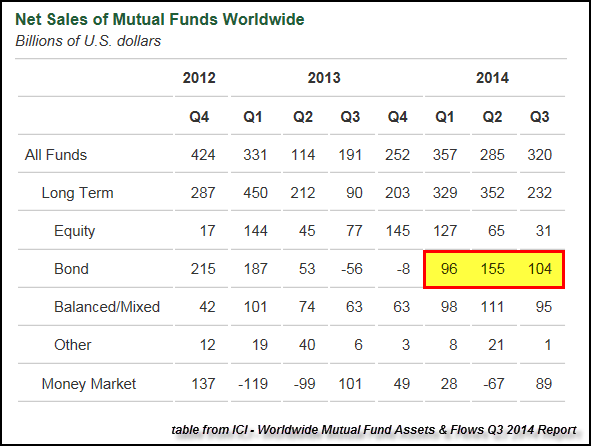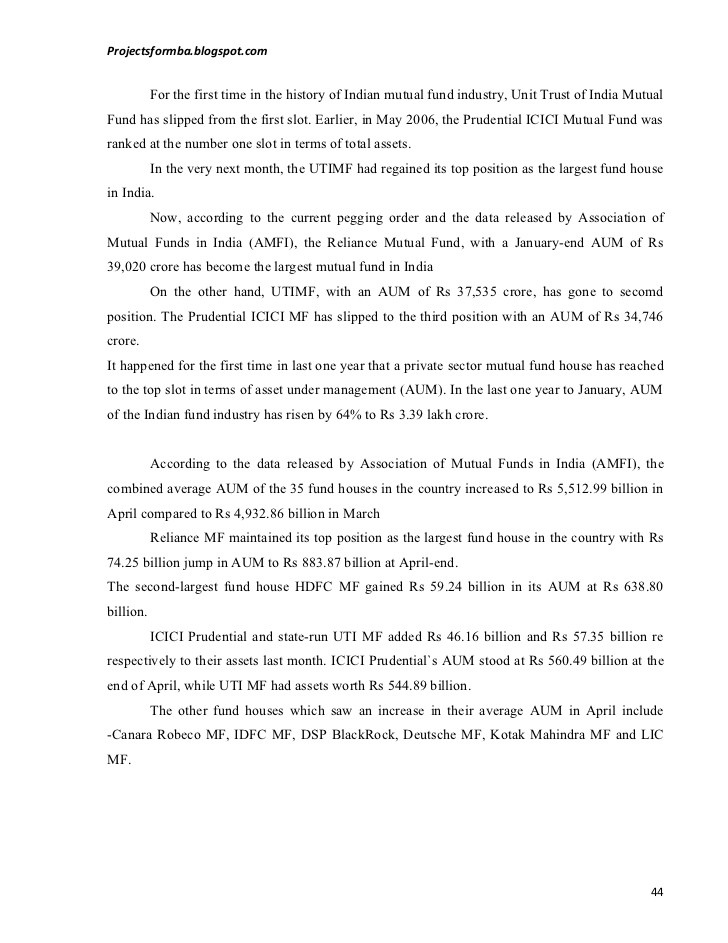January Time To Read Your Mutual Fund s Annual Report
Post on: 10 Июнь, 2015 No Comment

At the beginning of every year, mutual fund annual reports start to clog up mailboxes across the country. This is because starting in October and running through December most mutual funds close out their fiscal years and in January they provide an account of their actions and holdings to their investors. While a large percentage of shareholders might toss this document in the trash can when they receive it, it contains a wealth of information that can tell investors whether their fund managers are doing their jobs. It can also help investors determine whether the fund is still a suitable investment based on their financial objectives and risk tolerance. Read on to learn more about why a mutual fund’s annual report is more than junk mail and how you can use it to your advantage.
A Wealth of Information
The following is a breakdown of the five most-important items an investor should be looking for in his or her mutual fund’s annual report: the returns. holdings, expenses. risks and officers.
Within the annual report to shareholders, the fund manager will often provide a recap of the year (meaning major investments held and overall performance) as well as some forward-looking statements. The first thing to look for is whether your fund is beating major market benchmarks such as the S&P 500? If not, you need to find out why it isn’t.
If the explanation behind the managers’ underperformance doesn’t impress you, their outlook for the future is downbeat, or the performance in comparison to another major benchmark is off the mark, it makes sense to consider moving on to greener pastures. (To keep reading on this subject, see The Truth Behind Mutual Fund Returns .)
Investors should then ponder the company’s holdings and direction and make sure that this is consistent with their investment goals and level of risk tolerance. If overseas investing or large holdings in a particular industry seem too risky, consider selling your position. If you’re unsure, make sure to contact your manager to confirm if this is the best fund for you. (To find out your own risk tolerance, check out Personalizing Risk Tolerance and Determining Risk And The Risk Pyramid .)
Also, shareholders should take note of whether the manager has done any window dressing . In other words, has he or she added hot stocks or stocks that have appreciated markedly in price to the portfolio simply to make it look better to shareholders? This practice is fairly commonplace, however, some do view it as a deceptive move. It is important to note that there could be some tax consequences for the fund if the manager were to then sell the position soon after investors have admired the portfolio in the annual report.
Expenses
The annual report to shareholders will also detail the fund’s expenses. Read this section carefully because it may help explain the fund’s returns over the past year as well as give some insight as to what is to be expected in the current year. Look specifically for the institution of, increases in and total charges relating to: front-end loads. back-end loads. 12b-1 expenses, redemption fees and transfer fees (charged if the investor transfers money between funds). (For more insight, read Stop Paying High Fees .)
This section is extremely important because as fees go up, it is likely to have an impact on the shareholder’s total net return.
Some risks may be outlined in the fund manager’s forward-looking investment outlook or revealed in the fund’s holdings, while others may be detailed in their own special section. Read these sections carefully because they may outline a number of risks and uncertainties that could adversely impact your holdings and/or returns in the current year.
Some types of risks investors should be on the lookout for include:
- Currency risk . The risk that investment returns might be adversely affected when overseas investment dollars are converted back into the local currency.
- Political risk . When investing overseas and in politically unstable areas of the world this is always a risk. By extension, there is always the concern that a foreign government may try to nationalize companies in a particular industry and that this may impact the fund’s holdings as well.
- Weakened Economies or Earnings Prospects. Both have the potential to adversely impact investment returns.

Officers
The annual report will also typically contain a section about the fund’s manager and other key members of the fund (such as analysts). In that section, typically the individual’s age, experience, time with the fund and other qualifications may be outlined. (To find out how to examine your officers, read Assess Your Investment Manager . Does Your Investment Manager Measure Up? and Mutual Fund Management: Team Players Or All-Stars? )
Investors should be on the lookout for read flags in this area. Are the individuals running the fund old enough to have experienced both bull and bear markets? Also, have they ever experienced a recession during their professional careers? How much experience do they have in their current positions? While there are no right or wrong answers to these subjective questions, shareholders should feel comfortable with the people that are managing a fund. (To learn more see Has Your Fund Manager Been Through A Bear Market? )
Investors should also check the fund managers’ and key employees’ professional qualifications and designations. Do they have CFAs or MBAs? To be clear, having a lot of letters after one’s name doesn’t necessarily make them a better manager or investor, but shareholders might feel a little more comfortable knowing that individuals who have attained such qualifications have received some degree of additional education or training. (To figure out what all those little letters mean, check out The Alphabet Soup Of Financial Certifications .)
This Trash Is Treasure
It’s tempting to toss your mutual fund’s annual report to shareholders in the trash, particularly if your investments have fared well over the past year. However, try to dispel the urge until after you’ve read it. The document usually contains valuable information and insight that can help you understand whether the fund is still suitable based upon your financial needs and risk tolerance.
To learn more about researching your investments, see Data Mining For Investing .














